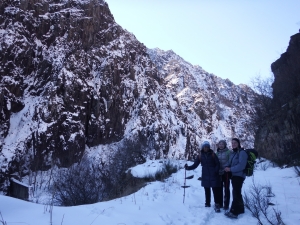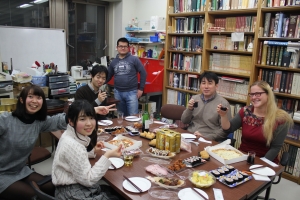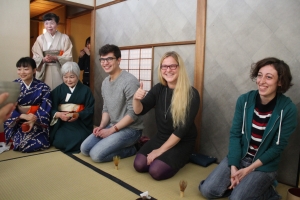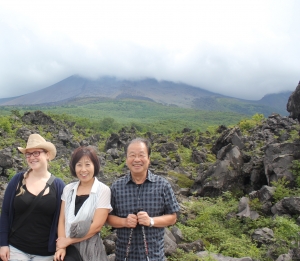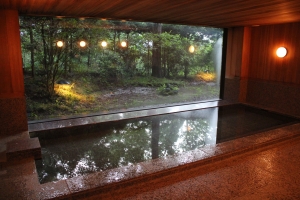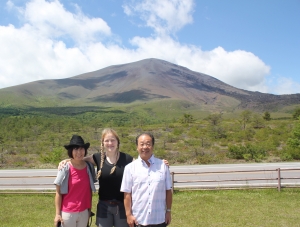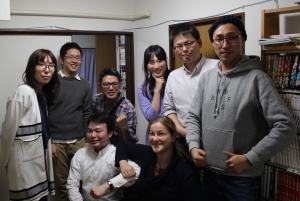I am from Germany and I am writing my PhD at the University of Iceland. My dissertation focuses on the colonization of Iceland during the Viking Age. Volcanic islands fascinate me; in particular the questions when and how islands were colonized in prehistory and what the impact of volcanic eruptions are on settlements. In order to understand colonization patterns I analyze volcanic ash at archaeological sites.
During my stay in Iceland I looked for comparable studies at islands around the globe and I found out that Japan has a lot in common with Iceland. Both islands are located on the same tectonic plates that constantly move and therefore produce much volcanic activity. I applied for a 9 months Watanabe Trust Fund because I was curious about Japan and I wanted to explore volcanism in Japan and get an insight about Japanese research. On top of that I found out that there are unique machines at the Tokyo Metropolitan University (TMU) that allow identifying volcanic ash.
The day I arrived in Japan I was overwhelmed by the generosity and hospitality of Japanese people. I got picked up at the airport from my Japanese contact Masami Izuho; I was given a welcome party at TMU and I was easily integrated, e.g. I got invited to participate in graduation ceremonies at TMU and evening dinners with colleagues from TMU and well as from the University of Tokyo. I also participated in a field trip to South Korea where Japanese students and me learned about the archaeology of Korea. This trip was also very fascinating and made it possible to get to know Korean culture and history as well.
I lived in the International House on campus and everything was easily accessible and well organized. I met a lot of researchers who were interested in my studies on Iceland and on the other hand I learned a lot about the history of Japan. I gave presentations at both the department of archaeology and geography at TMU. Takahiko Zuzuki and his students from the geography department were so kind; they taught me how to use the machines in the lab in order to analyze tephra layers. We had a lot of great discussions about Iceland and Japan.
During my stay my Japanese teacher Yumiko Izumizawa not only taught me the Japanese language but she was also so kind and invited me to field trips exploring Japanese volcanoes and hot springs. She also introduced me to German influenced towns and roads (e.g. Kariuzawa and “Romantic Road”) as well as Japanese culture and food. It made me feel like home. I also joined hiking clubs; one of my favorite trips was bathing in Japan’s highest wild hot spring (2150m) during the winter. Furthermore I joined language exchanges where we toughed each other Japanese and German. I have made good friends that want to visit me in Germany and Iceland in the future.
I have learned a lot in Japan and it was absolutely fascinating to get to know Japanese culture, to explore the similarities but also differences between the two volcanic islands. The experiences I have made are unforgettable. I have also met international researchers who are interested in working together on future projects. My stay in Japan certainly has future potentials in research, which would not have been possible without the Watanabe Trust Fund.
Magdalena Maria Elisabeth Schmid, PhD Candidate, University of Iceland

